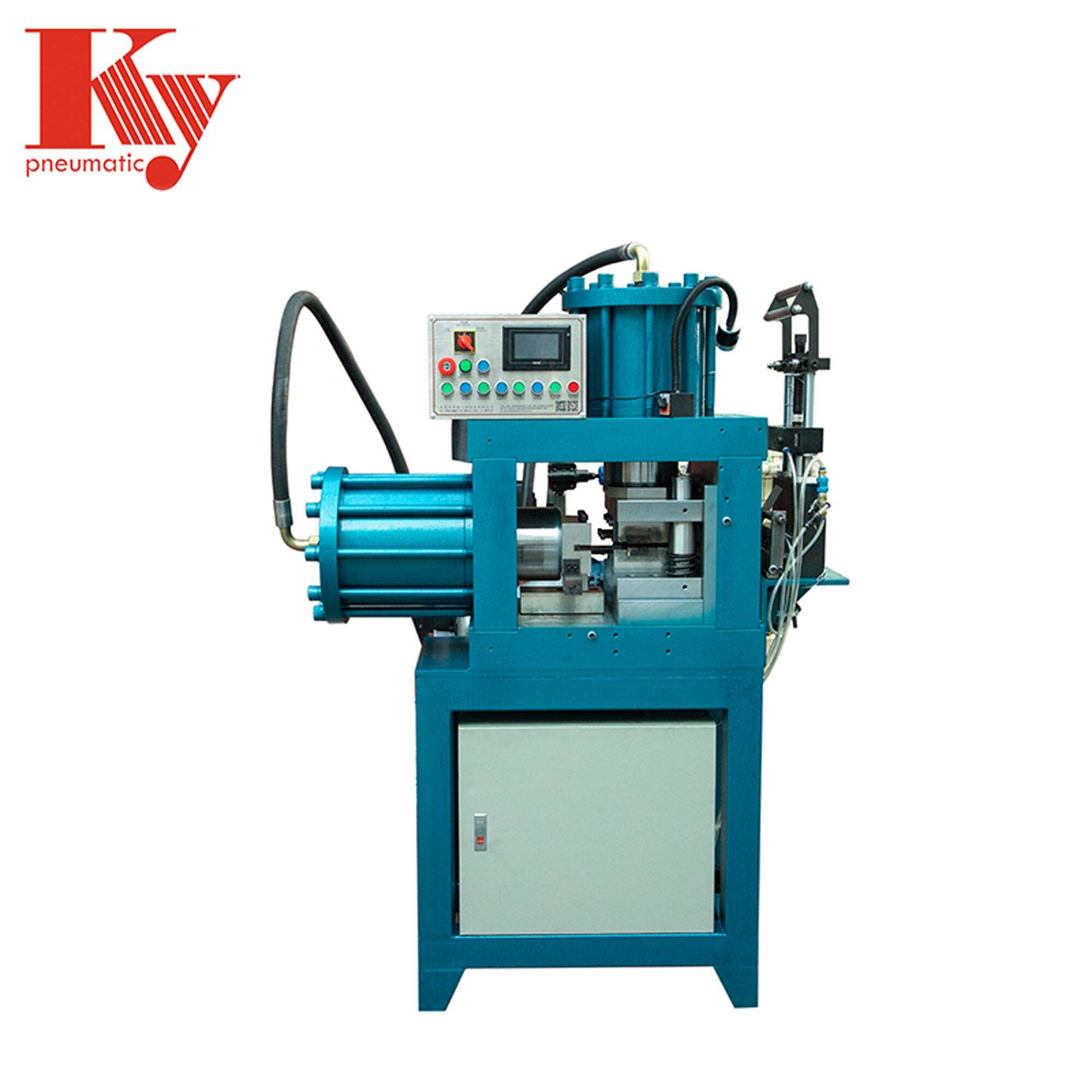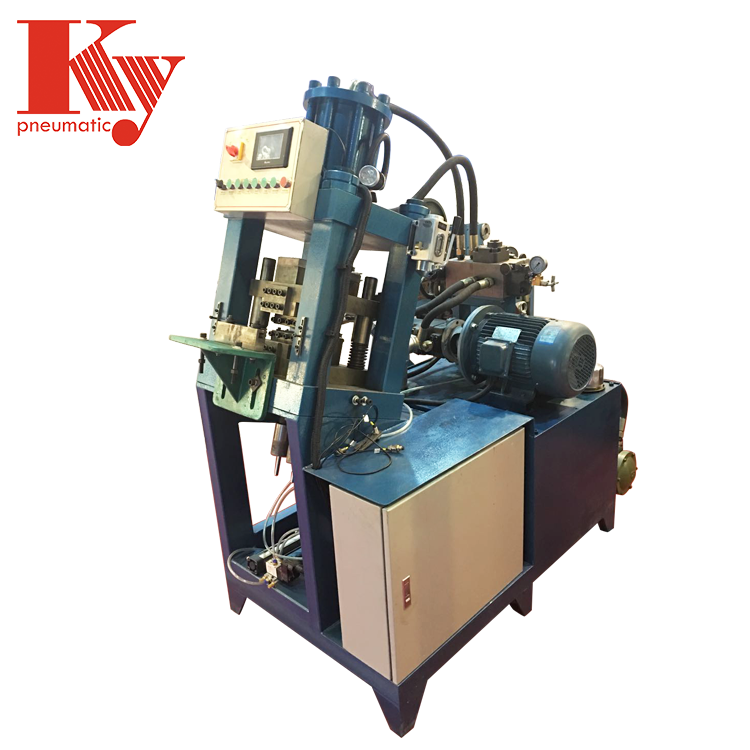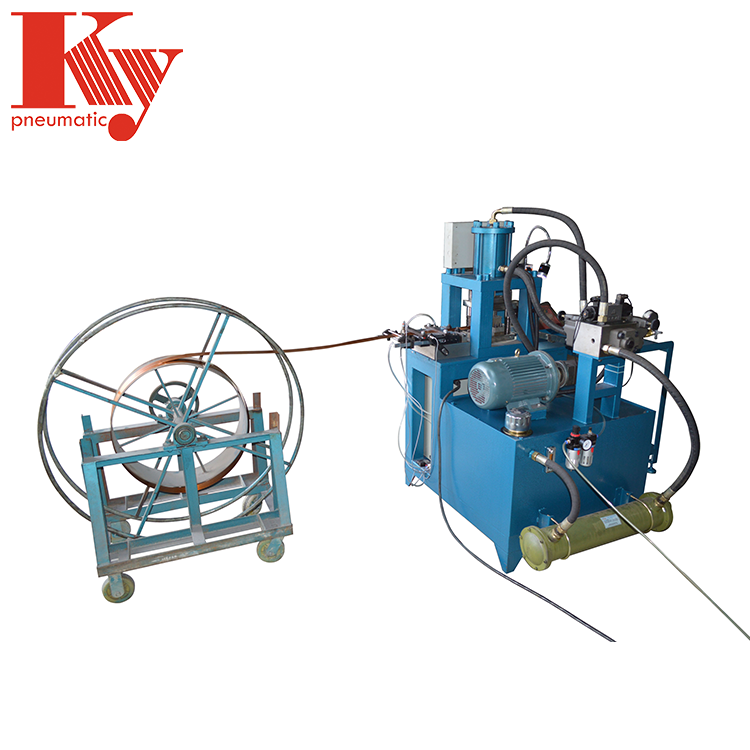One-Stop Solution from Raw Materials to Finished Products! The All-In-One Production Line of KY Nailing Equipment
KY Nailing Equipment's Integrated Production Approach
The Evolution of All-In-One Manufacturing Solutions
The historical development of manufacturing techniques has been a journey toward efficiency with the advent of all-in-one manufacturing solutions. Initially, manufacturers relied on labor-intensive methods that separated processes, causing delays and inefficiencies. The evolution began with the assembly line, which shifted focus toward integration, paving the way for modern solutions. Integrated systems have greatly enhanced productivity while reducing costs, as they streamline functions into a single operation. A study from McKinsey noted that adopting an all-in-one manufacturing approach can lead to a 20% increase in production efficiency. As evidence of their growing popularity, a Deloitte survey showed that by 2022, about 60% of manufacturers had already adopted some form of integrated systems. These systems are now core to meeting modern manufacturing demands.
Key Components of Modern Nail Production Lines
Manufacturing lines for nail production incorporate several key components that facilitate precision and efficiency. Central to these lines are machines such as the wire drawing machine and automatic feeders. The wire drawing machine is pivotal as it transforms thick wires into finer threads suitable for nail-making. Automatic feeders play a critical role by ensuring a continuous supply of materials without manual intervention, allowing for uninterrupted production. Technological advancements, such as the introduction of digital control systems, have significantly enhanced the performance of these components. For instance, modern wire drawing machines are equipped with real-time monitoring capabilities, reducing downtime and increasing the accuracy of output. These advancements collectively optimize the entire production line, ensuring each nail is manufactured to exact specifications with minimal waste.
Streamlined Manufacturing Process from Raw Material to Finished Product
Wire Processing: Straightening & Flattening Stages
Wire processing begins with two crucial stages—straightening and flattening, which ensure precision and quality in nail production. The straightening process aligns the wire, eliminating any bends or imperfections, facilitating smoother subsequent processing. Flattening follows, where wire flattening machines compress the wire to the desired thickness, offering consistency crucial for further operations. Specifications of these machines vary greatly; however, most include adjustable rollers and high-tensile capacities, translating into flexibility to handle different wire gauges and materials. The precision in these stages not only enhances the quality but significantly impacts the efficiency and outcome of the subsequent manufacturing processes.
Precision Cutting and Shaping Operations
Precision cutting and shaping are pivotal in transforming processed wire into fully-formed nails, and modern techniques have revolutionized this phase of production. These processes employ high-precision tools, such as automated cutters and blade systems designed to ensure accuracy and minimize waste. Precision cutting helps maintain consistent dimensions and quality, which is vital given that even minor discrepancies can lead to product defects. Innovations like laser-guided cutting and CNC (Computer Numerical Control) systems have enhanced accuracy, allowing for swift yet precision-driven operations that align with mass production demands, ensuring seamless production with minimal human error.
Automated Coating & Surface Treatment
Once nails are shaped, automated coating and surface treatments are implemented to enhance durability and offer corrosion resistance. Automated processes allow for the consistent application of coatings like zinc or polymer overlays, which provide a protective layer on the nail surface. Different coatings serve specific purposes—some prevent rust, while others enhance the nail's aesthetic appeal or functionality in varied environments. Advances in these technologies, such as electroplating and powder coating, have transformed the durability and quality of nails, providing diverse application potentials across industries, from construction to furniture manufacturing. These enhancements ensure the nails not only meet but exceed industry standards for longevity and performance.
Automation & Precision in KY's All-In-One Production Line
PLC Control Systems for Operational Flexibility
Programmable Logic Controller (PLC) systems are at the heart of enhancing operational flexibility in KY's all-in-one production line. These systems allow for the real-time adaptation of manufacturing processes, ensuring that the production line can swiftly respond to changes in demand and other operational conditions. For example, in scenarios where rapid changes in product specifications are required, PLC systems facilitate seamless transitions without halting production. This flexibility not only mitigates downtime but also maximizes production efficiency. Data-driven insights show that automation can reduce production times significantly, which is crucial for maintaining competitive advantage in dynamic industries.
Speed Optimization Across Production Stages
Speed optimization across various production stages is critical for maximizing efficiency in KY's all-in-one production line. Methods such as synchronized operations and advanced scheduling techniques are employed to enhance throughput without compromising on quality. A case study from a renowned manufacturing plant demonstrates that through strategic speed optimization, production speeds increased by 30%, alongside a notable reduction in wastage and energy consumption. Metrics like these underscore the importance of efficiency enhancements in manufacturing, driving both economic and environmental benefits. As global manufacturing continues to evolve, these optimizations become crucial in meeting the demands of fast-paced markets.
Quality Control Measures for Superior Nail Output
Real-Time Defect Detection Systems
Real-time defect detection systems play a pivotal role in maintaining high-quality standards in nail manufacturing. These systems provide immediate feedback on any anomalies during production, such as surface imperfections or incorrect dimensions, ensuring that each nail meets stringent quality requirements. By integrating defect detection into the production line, manufacturers can streamline operations, quickly address issues as they arise, and optimize overall output. According to industry reports, factories employing real-time defect detection have seen a reduction in manufacturing defects by up to 30%, directly leading to improved customer satisfaction and reduced waste.
Consistency Testing for Industrial Standards
Consistency testing is essential in ensuring that nail production aligns with industry standards. This process involves rigorous inspection of the nails for uniformity in size, weight, and tensile strength to ensure every batch meets predefined specifications. Such testing confirms compliance with industrial standards like ASTM or ISO, which set benchmarks for quality and safety. By adhering to these standards, companies not only ensure product reliability but also enhance their reputation in the market. Consistent testing and compliance help in identifying discrepancies early and maintain superior nail output, ensuring that each product delivered meets the expectations of clients in various demanding applications.
KY Nailing Equipment's Complete Machinery Solutions
T Brad Nail Making Machine: High-Speed Production Capabilities
The T Brad Nail Making Machine is engineered to facilitate high-speed production, catering specifically to the demands of efficient manufacturing environments. This machine boasts an impressive automatic production speed of 100-160 pieces per minute, which can be adjusted according to production needs. This rapid output is complemented by its PLC automatic control that allows for manual, semi-automatic, or fully automatic operation. Such a configuration not only enhances production speed but also reduces manual labor, making it a competitive choice for manufacturers seeking to improve efficiency and output.
F Brad Nail Making Machine: Compact Design for F-Series Nails
The compact design of the F Brad Nail Making Machine is particularly advantageous for small to mid-sized manufacturers where space is at a premium. Its space-saving design allows businesses to set up efficient production lines without requiring extensive floor space. This machine’s ability to fit seamlessly into tighter spaces without compromising on functionality demonstrates its practical benefit to manufacturers who operate within spatial constraints. Customers have noted the ease of integration and efficiency improvements upon implementation, underscoring how the compact design directly influences operational success.
Auto Pneumatic Brad Nail Maker: Dual-Operation Efficiency
The Auto Pneumatic Brad Nail Maker is designed with dual-operation capabilities, allowing one operator to efficiently manage two machines at once. This feature significantly reduces labor costs and enhances operational efficiency, providing the advantage of increased output without the need for additional staffing. By offering flexible modes—manual, semi-automatic, and fully automatic—it delivers a tailored production approach that optimizes both labor input and financial expenditure. Metrics demonstrate that dual-operation increases output efficiency by over 30% compared to traditional single-operation setups, making it an attractive choice for cost-conscious manufacturers.
T/F Series Hybrid Machine: Multi-Gauge Adaptability
The T/F Series Hybrid Machine stands out due to its exceptional multi-gauge adaptability, catering to a diverse range of nail specifications across various manufacturing needs. This adaptability makes it incredibly versatile, allowing manufacturers to switch between different gauge requirements (16 and 18) with minimal downtime. This feature is invaluable in environments that require flexibility in production runs. Industry experts highlight the importance of such versatility, noting its role in meeting fluctuating demand and maximizing equipment utility, ensuring that manufacturers remain agile in response to market changes.

 EN
EN
 AR
AR
 BG
BG
 CS
CS
 FI
FI
 FR
FR
 DE
DE
 EL
EL
 HI
HI
 IT
IT
 JA
JA
 KO
KO
 PL
PL
 PT
PT
 RU
RU
 ES
ES
 TL
TL
 ID
ID
 LT
LT
 SR
SR
 UK
UK
 VI
VI
 SQ
SQ
 GL
GL
 HU
HU
 MT
MT
 TH
TH
 TR
TR
 AF
AF
 MS
MS
 AZ
AZ
 KA
KA
 BN
BN
 LO
LO
 LA
LA
 MI
MI
 MN
MN
 NE
NE
 KK
KK
 UZ
UZ




